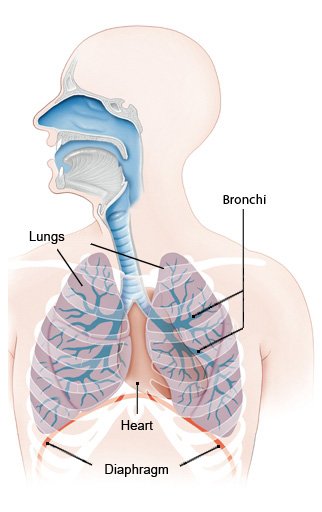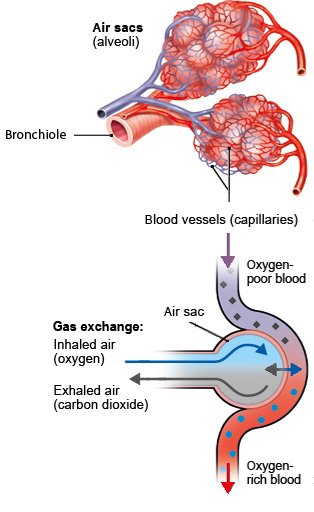How do lungs work?
Our lungs are vital organs. They allow us to breathe, ensuring that the oxygen in the air we inhale gets into our blood and reaches all of our body.
The lungs are located in the chest, protected by the ribs in the rib cage. Their structure can be compared to that of an upside-down tree: The windpipe branches into two airways on the left and right, called bronchi, which lead to the lungs. Inside the lungs, the airways keep branching into narrower airways until the air sacs are reached.
A person’s physical fitness greatly depends on how well their lungs and heart work. Your lung function can be measured using various breathing tests.


